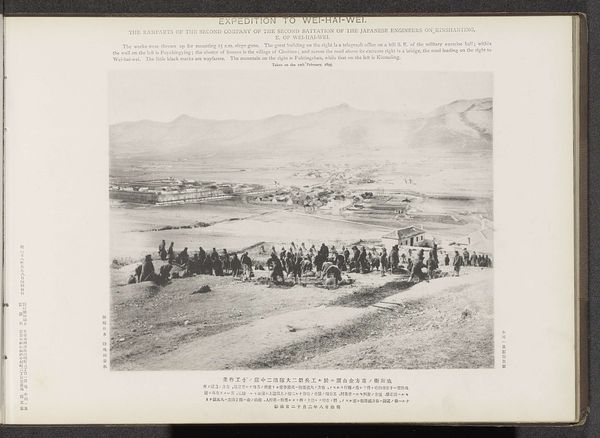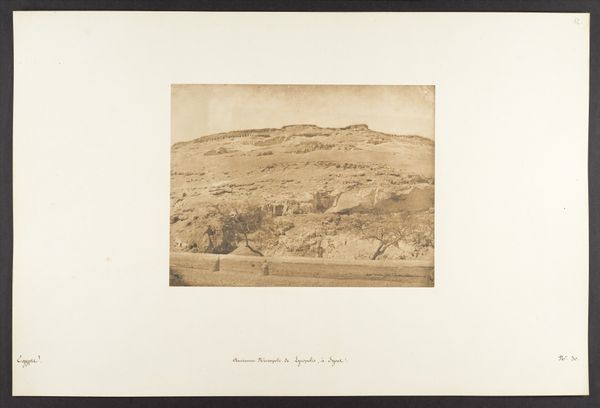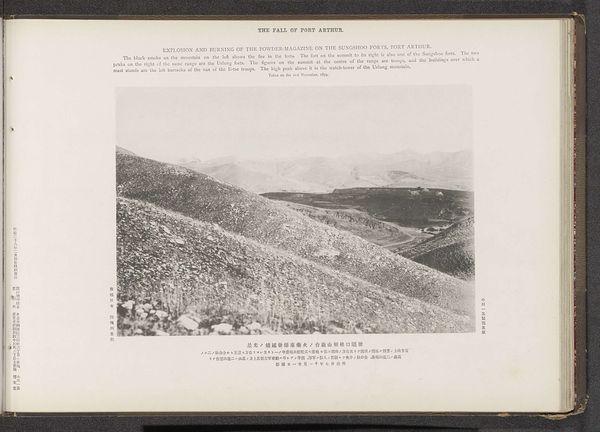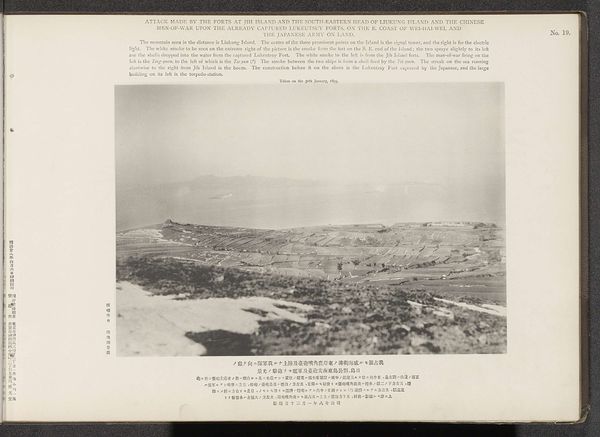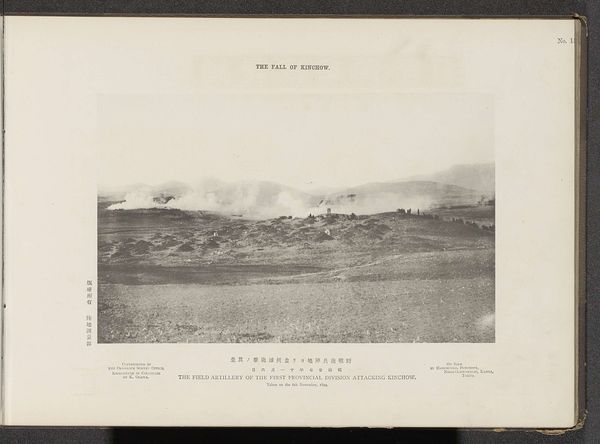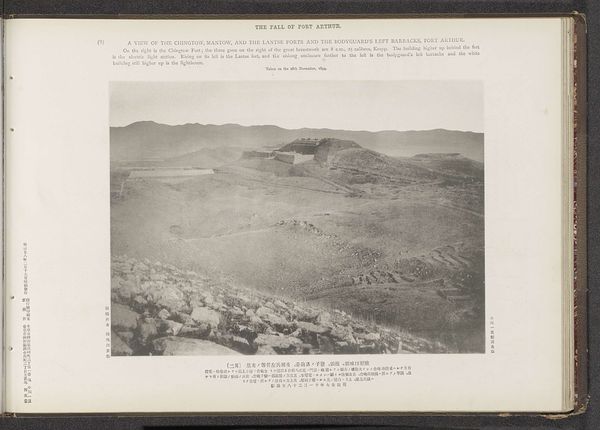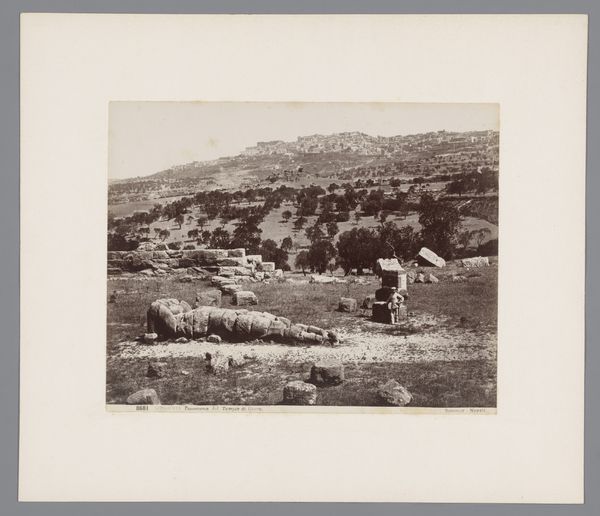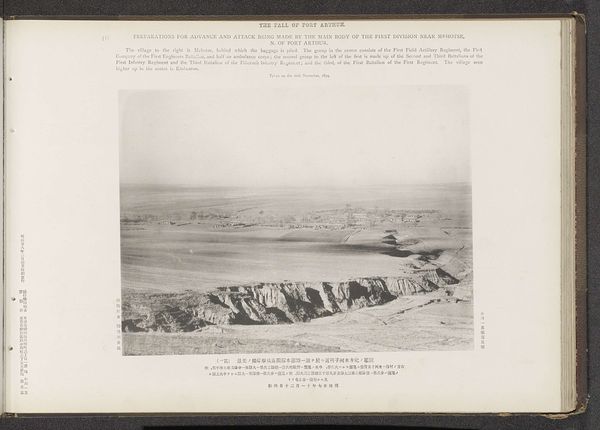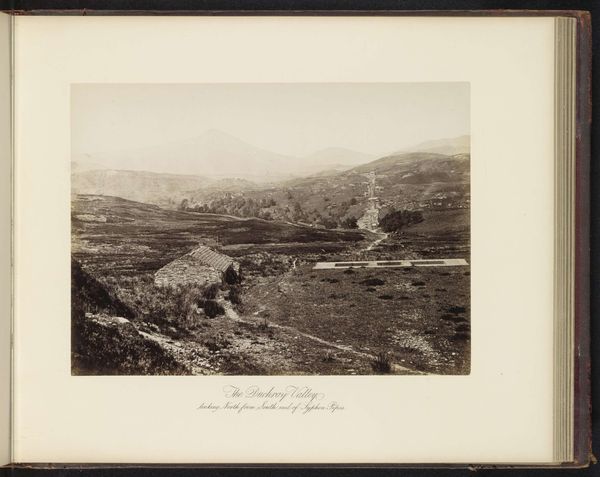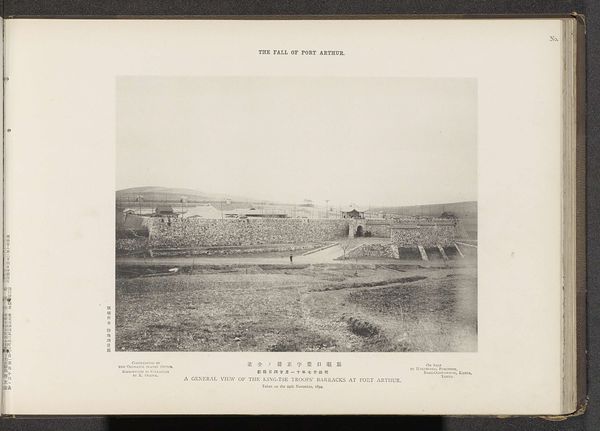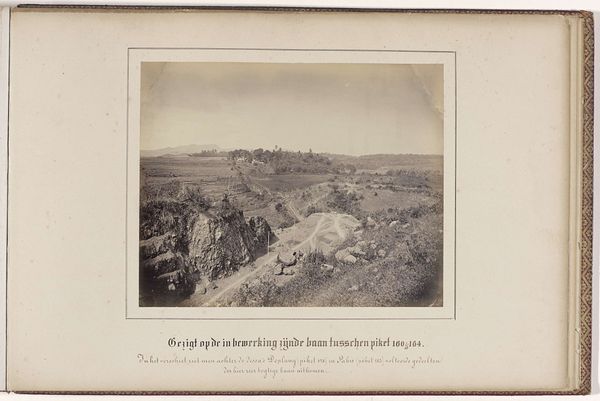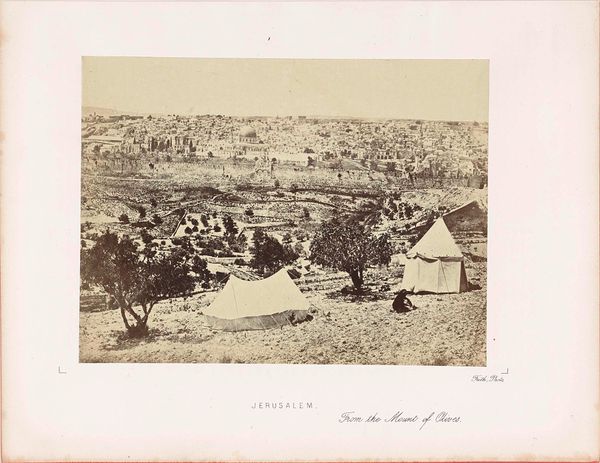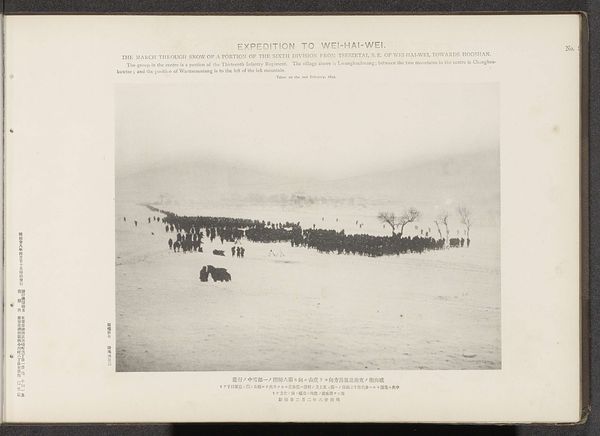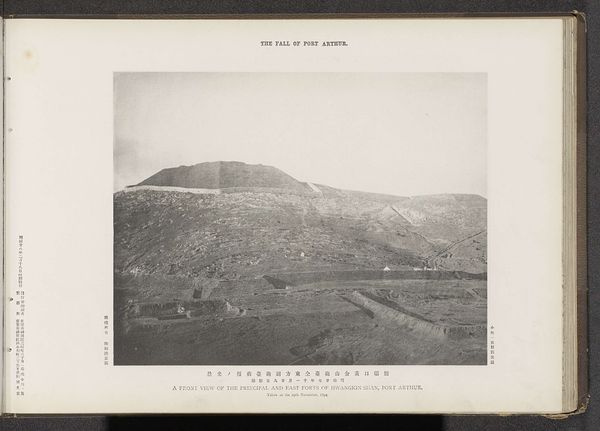
Mustering of the various battalions of the first division on the south side of Shwangtaikow, N. of Port Arthur Possibly 1894
0:00
0:00
print, photography, gelatin-silver-print
# print
#
landscape
#
photography
#
orientalism
#
gelatin-silver-print
#
history-painting
#
paper medium
#
realism
Dimensions: height 203 mm, width 282 mm
Copyright: Rijks Museum: Open Domain
Curator: At first glance, it's stark. The tonal range, from near-white sky to the soldiers’ dark forms, establishes a distinct hierarchy of light and shadow. Editor: This gelatin-silver print, potentially dating to 1894, is entitled "Mustering of the various battalions of the first division on the south side of Shwangtaikow, N. of Port Arthur." It’s attributed to the Ordnance Survey Office, offering us insight into the military documentation practices of the time. Curator: Precisely. Note the receding lines—the soldiers meticulously arranged in the middle ground, then diminishing in scale, guide the eye deep into the pictorial space. There’s a rhythmic quality to their arrangement. Editor: It appears as documentation, certainly, but I see orientalist and historical painting style tendencies informing its composition. The scene hints at a pivotal historical event, laden with the weight of imperial power and the human cost of war. Curator: Consider the tonal values alone. The gradations are surprisingly complex given the documentary context. Notice how the atmospheric haze almost abstracts the distant figures, creating depth through subtle variations. It avoids high contrast where definition might clarify meaning. Editor: What meaning is obscured by its supposed “abstraction”? Perhaps the harsh realities of warfare were subtly filtered for public consumption. Its realism is carefully calibrated to promote an ideal rather than convey lived experiences. Curator: You're hinting at manipulation? I simply see intentional modulation of tonality; the relationship between dark and light operates autonomously, aesthetically. Editor: I'm suggesting that such modulations don't occur in a vacuum. Institutions shaped both the image’s creation and its circulation. The very act of capturing this muster—perhaps staged, perhaps romanticized—becomes part of the colonial narrative. Curator: Regardless of staging, this photograph embodies balance through spatial organization and skillful tonal gradation. My focus centers around that—a structured interplay of photographic qualities. Editor: And my focus urges us to understand its wider influence. This artwork speaks, consciously or not, of cultural dominance through military prowess and photographic representation. It's far more than aesthetic play; it’s political visual culture at work.
Comments
No comments
Be the first to comment and join the conversation on the ultimate creative platform.
